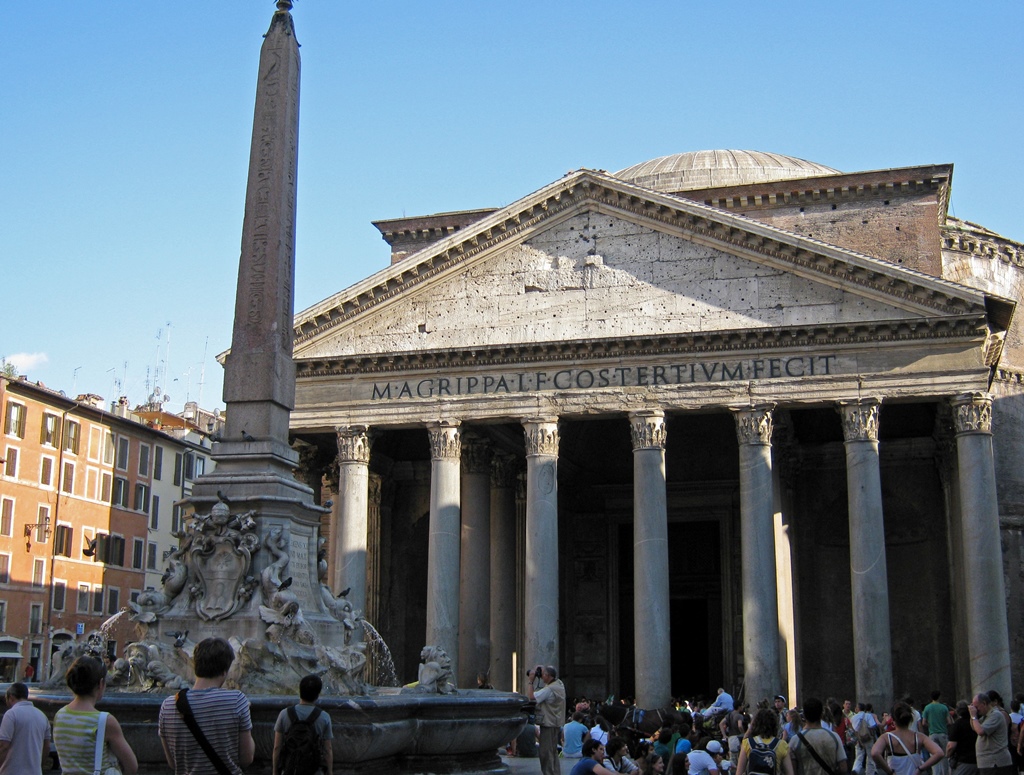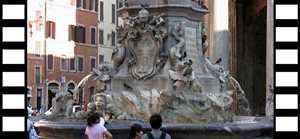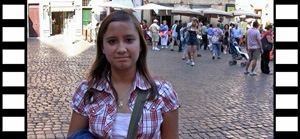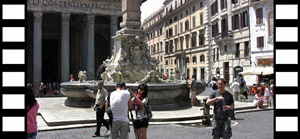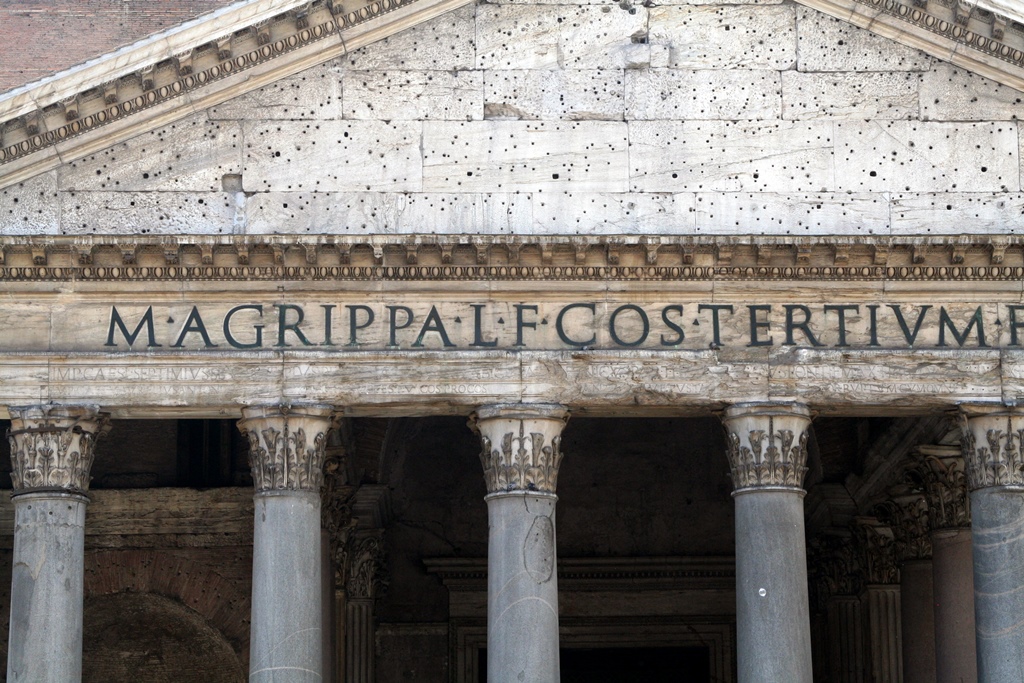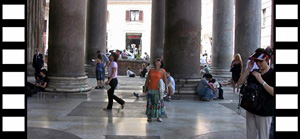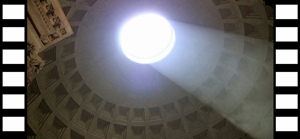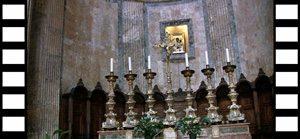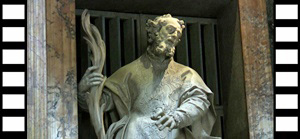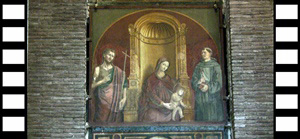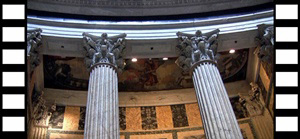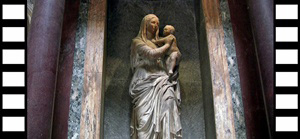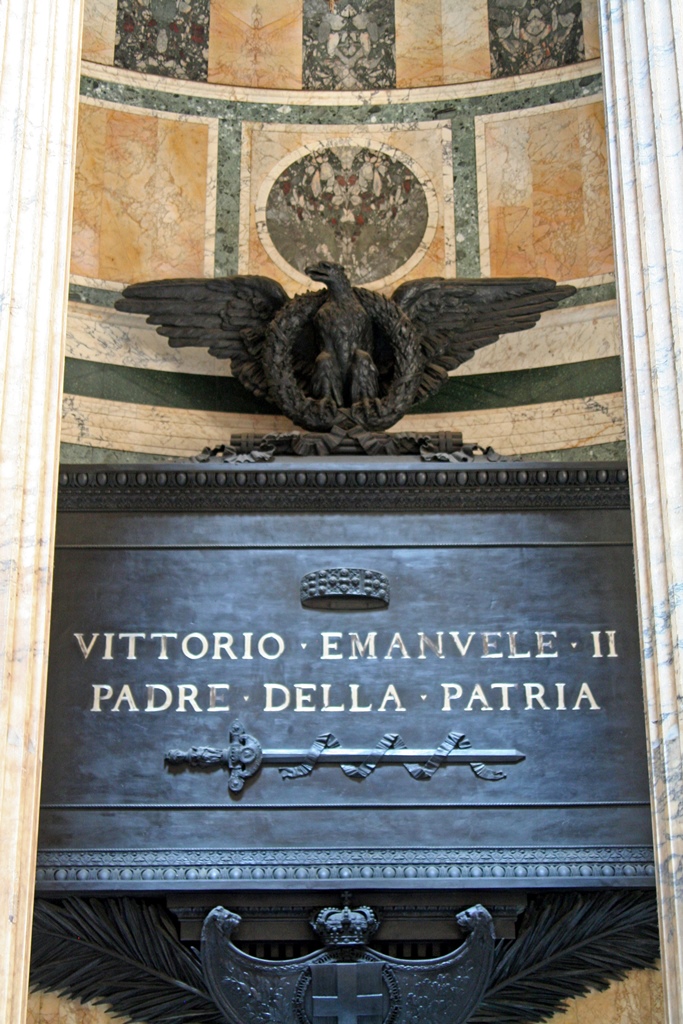We were slow getting up the next day, after our exertions through ancient Rome, but we
were able to get ourselves fed and over to the Piazza Navona slightly before noon, and
struck out due east for the Pantheon.
The Pantheon
The Pantheon is an ancient Roman building which was dedicated to all of the gods of the
time. It is circular in shape, so as not to show preference to any particular god
(this might have upset the others, as Roman gods were famously temperamental). The
building was built somewhere around 126 A.D. There is a prominent inscription on the
front explaining that it was built by the consul Marcus Agrippa, but this is untrue.
It was completed by the emperor Hadrian, possibly from an original design by Trajan's
architect Apollodorus of Damascus. An original Pantheon was built on the spot by
Marcus Agrippa in 27 B.C., however. There are differing opinions as to what it looked
like, but it was almost certainly very different from the current structure. It burned
down in 80 A.D., and was replaced by another structure which also burned down, in 110
A.D, to be rebuilt by Hadrian. The Byzantine emperor presented the Pantheon to Pope
Boniface IV in 609 A.D., at which time it was converted to a church honoring the Virgin
Mary and all of the martyrs. This helped to protect the building from scavenging, but
only partly – bronze which had covered the dome and the roof of the portico were
stripped off over the centuries for other uses, as was much decorative exterior marble.
The interior has been left mostly intact, though with some additions.

Pantheon and Fountain

Connie, Pantheon and Obelisk
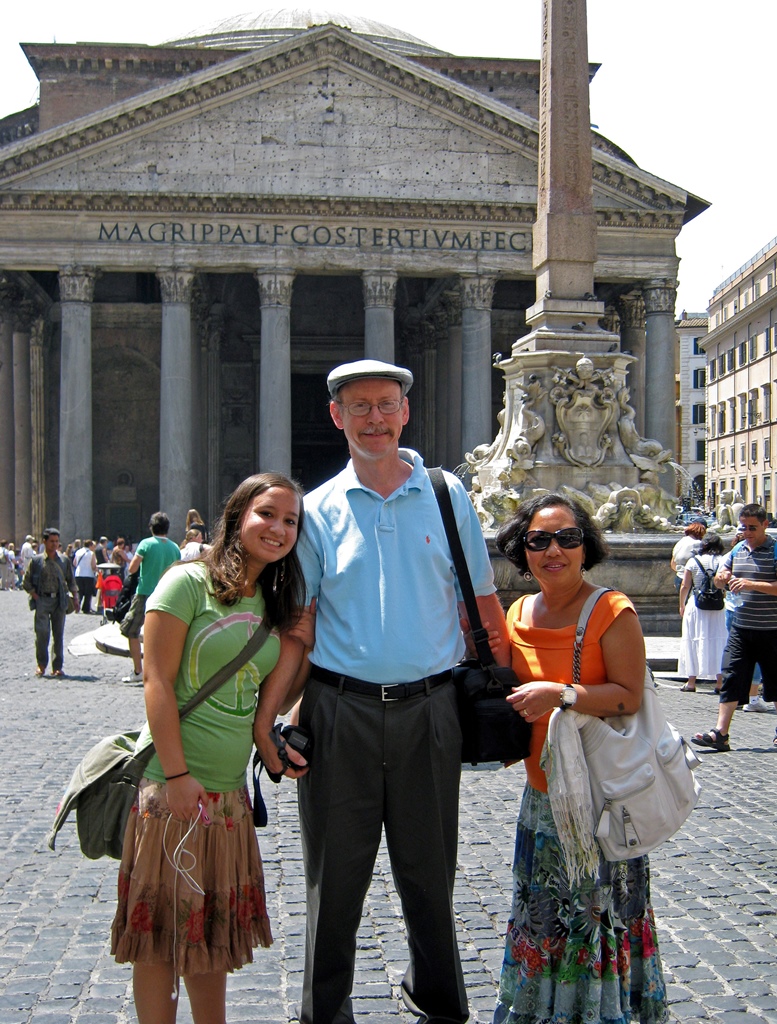
Connie, Bob, Nella & Pantheon

Philip Filling Water Bottle
Inscription
After gazing at the exterior for a number of minutes (it remains impressive, even without
the missing decorations), we walked down to see the interior (there is no entrance
fee - something free in Rome!). It quickly became obvious that it might have been a good
idea to arrive earlier, as the tourist density was considerable.
Heading for the Pantheon
The most striking thing on entering is the dome, which is immense. With a diameter of 142
feet, it was in fact the largest dome in the world, from the time it was built until
Brunelleschi built his dome in Florence in 1436. It remains the world's largest
unreinforced concrete dome. Unlike the Florence dome, it is hemispherical in shape, and
if one were to add a "southern hemisphere", the result would be a gigantic globe sitting
exactly on the ground. At the top is a hole called the oculus, which lets in light
during the day. From the ground the hole doesn't look that big, but it's actually 27 feet
in diameter. Being that big, it also lets in a fair amount of rain, but the clever Romans
thought of this, embedding a drain in the center of the floor. The most difficult
engineering challenge in building a dome is the handling of the extreme weight (the
Pantheon's dome weighs about 5000 tons). The Romans took measures to reduce this weight,
first by adding the oculus (which weighs nothing), and then by varying the thickness of the
dome wall, from about four feet near the oculus to about 21 feet where the hemisphere meets
the equator. They also used less dense material in forming the concrete near the top.
Finally, a pattern of embedded square recesses (called coffers) was used, which
reduced the weight and was also quite decorative. The walls holding up the dome are 21
feet thick, and are full of "blind arches", which look like bricked-in windows, to
distribute the weight.
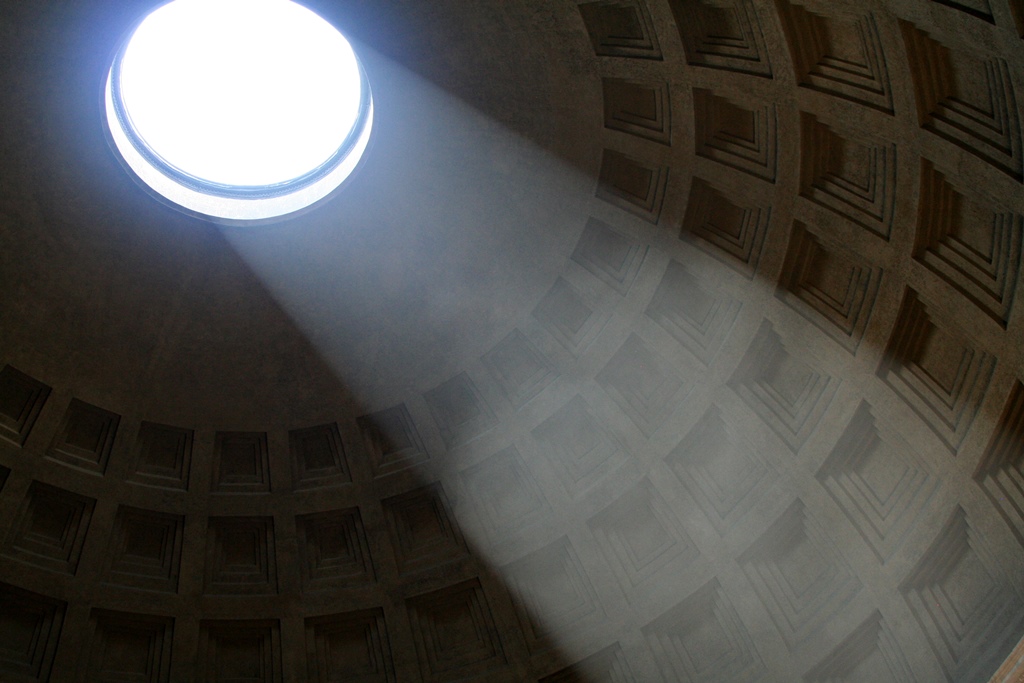
Dome and Oculus
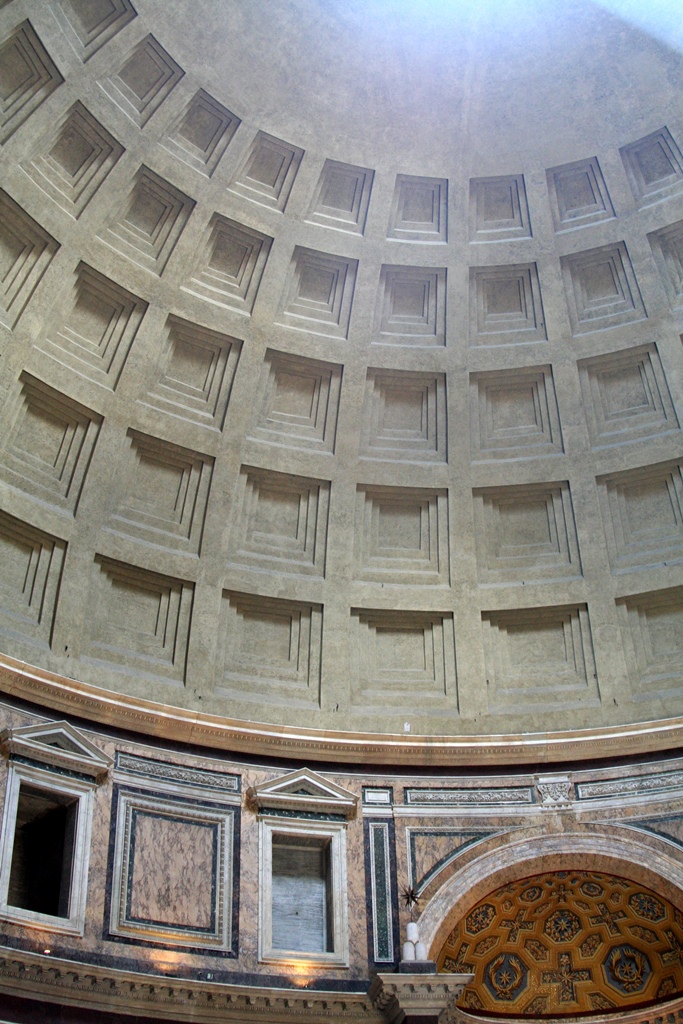
Dome Coffering
Dome Interior
Down closer to the ground, it was possible to see a great deal of artwork, if one could
find a path through all the bodies. There was also an altar and a section of pews, as
the Pantheon is a church.
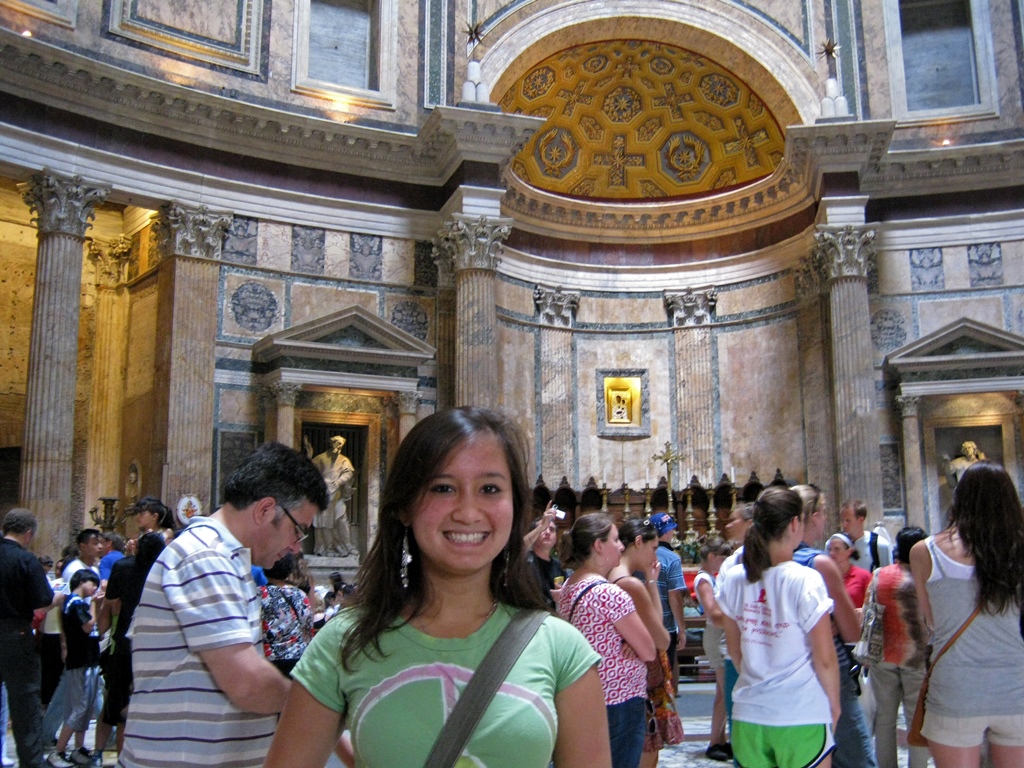
Connie and Altar Area
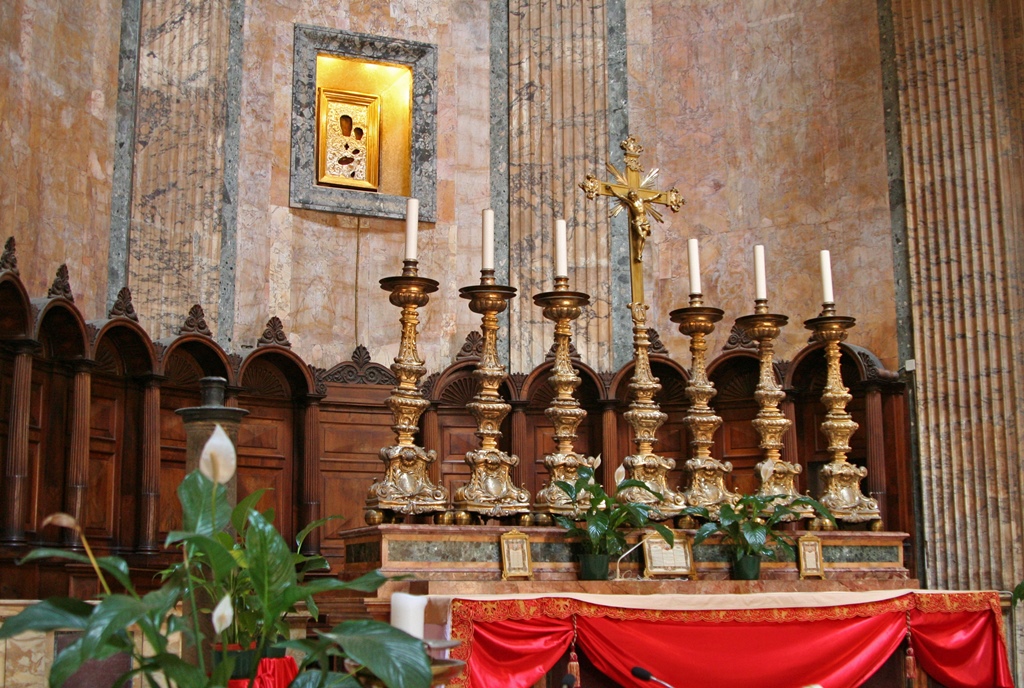
Altar
Altar and St. Anastasio Statue
We worked our way around the perimeter, looking at all the paintings and sculptures.
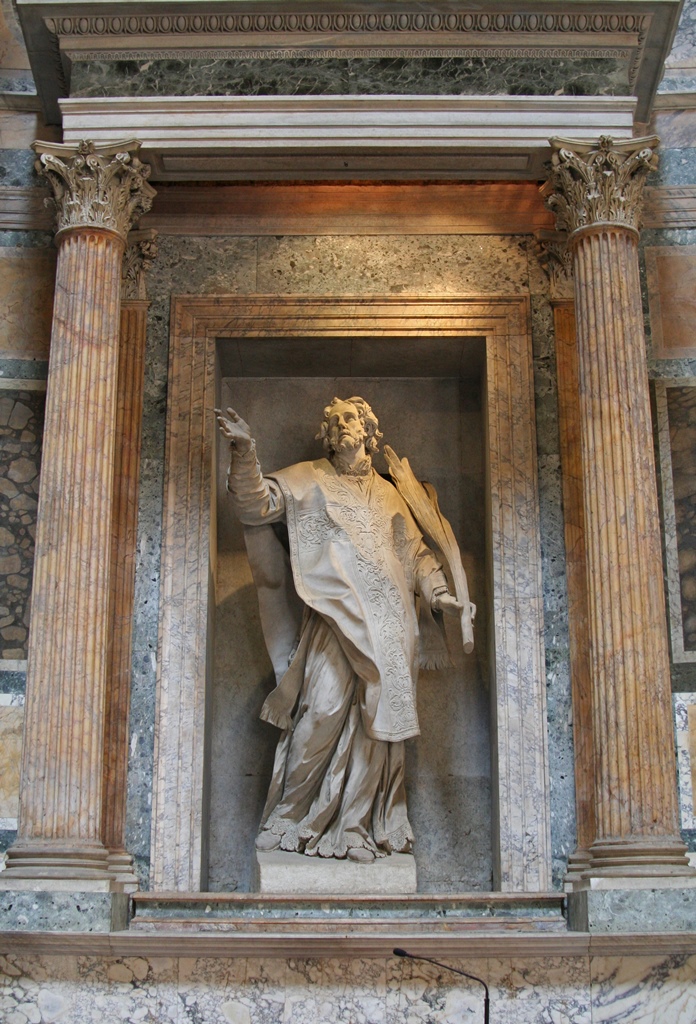
St. Anastasio, Bernardino Cametti (1725)
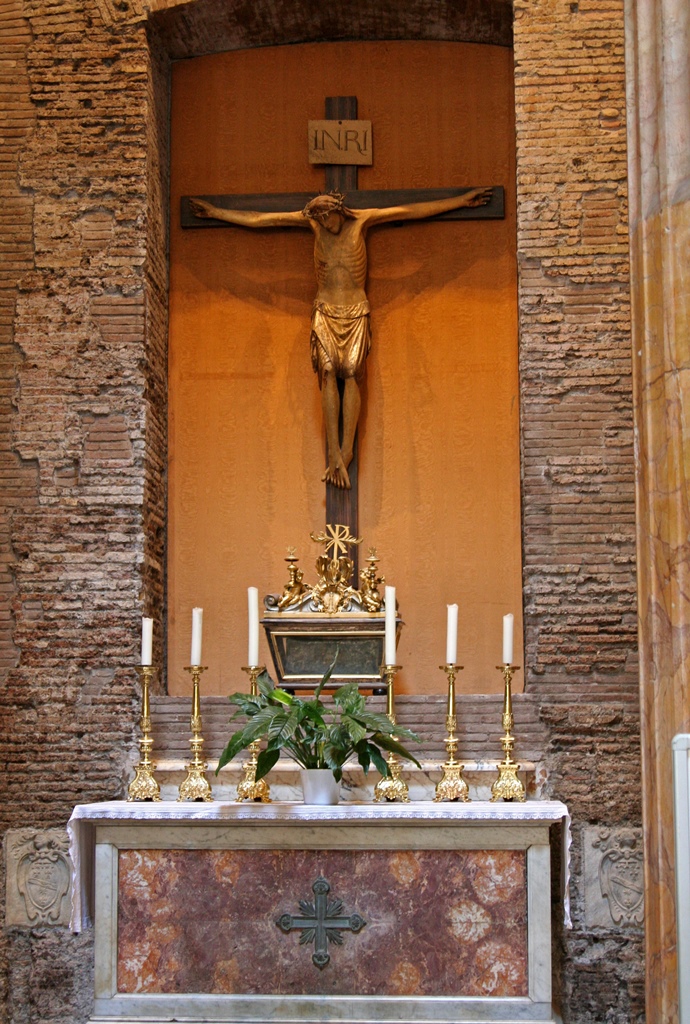
Chapel of the Crucifixion

Chapel of the Crucifixion and St. Rasius
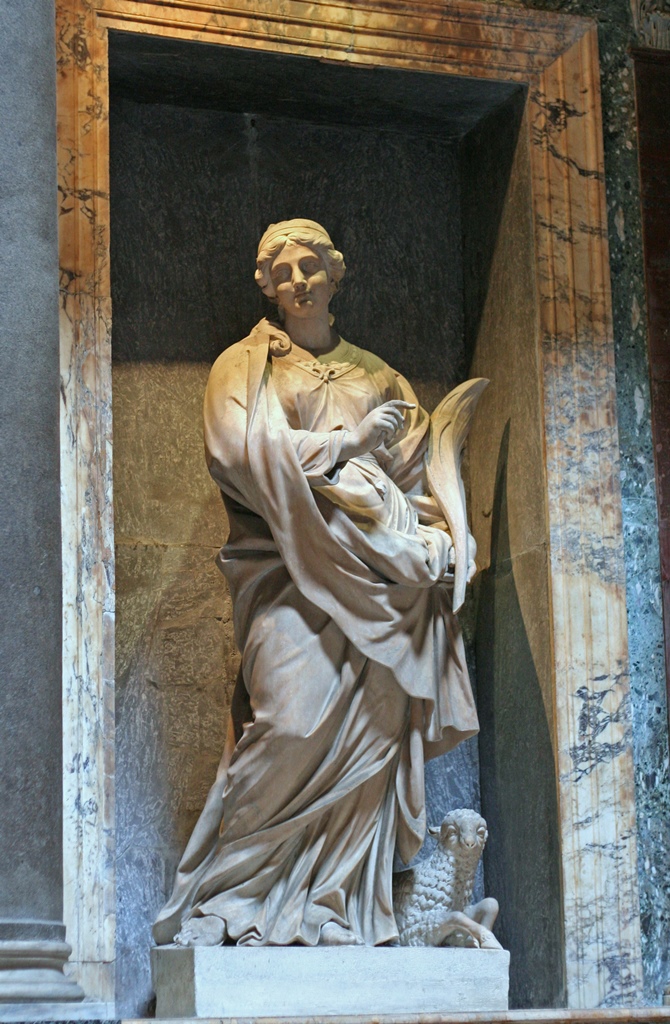
St. Agnes, Vincenzo Felici (c. 1700)
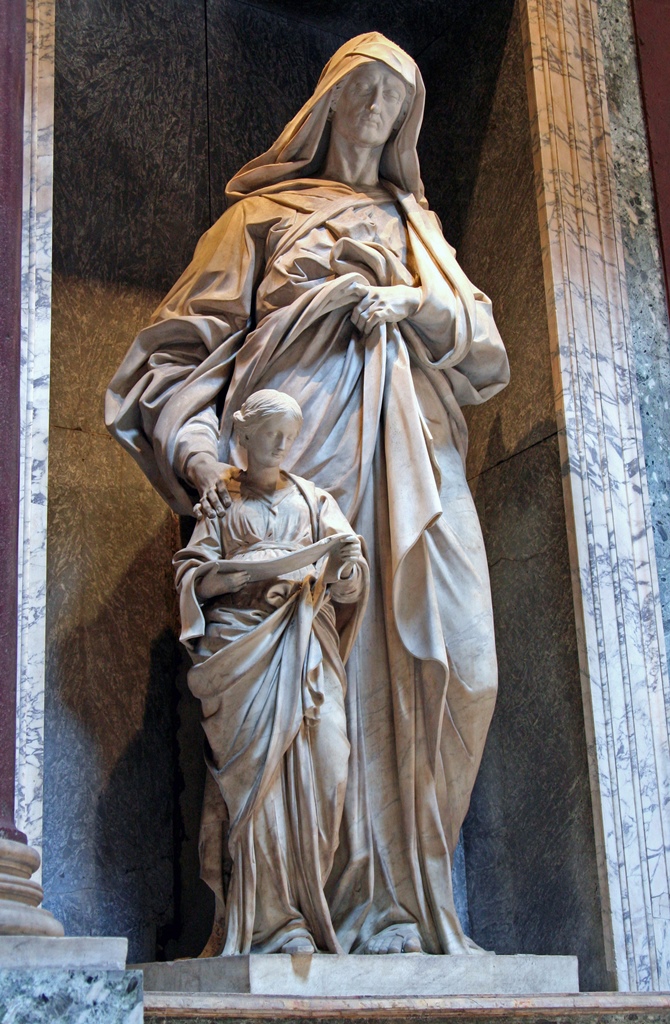
St. Anne and the Blessed Virgin, Il Lorenzone

Madonna of Mercy & St. Anne and the Blessed Virgin
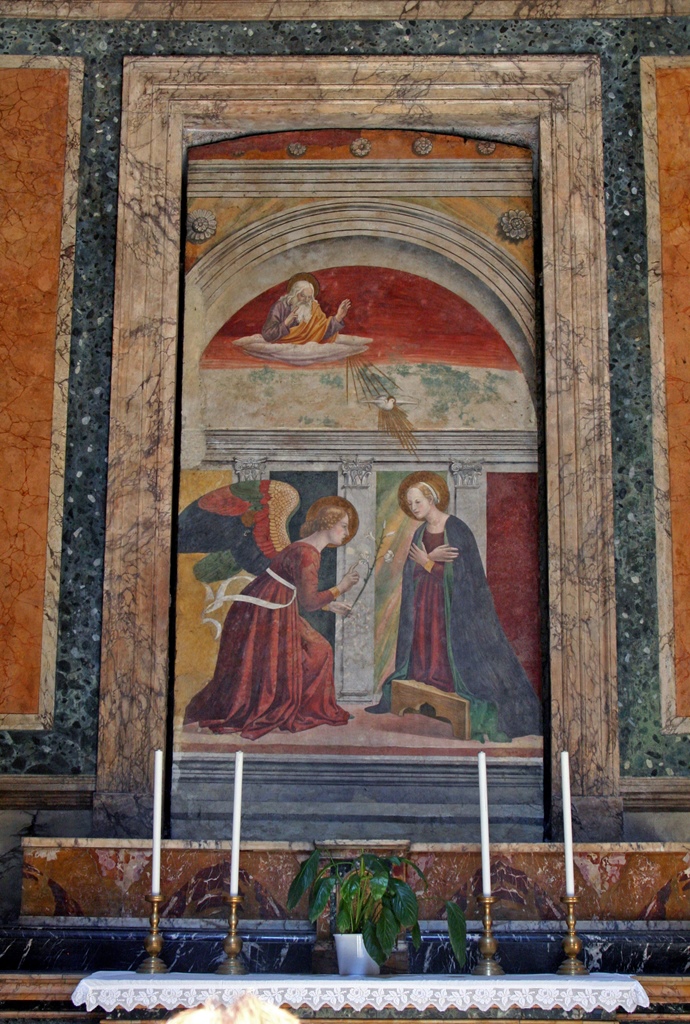
Annunciation, Melozzo da Forli (1480-84)
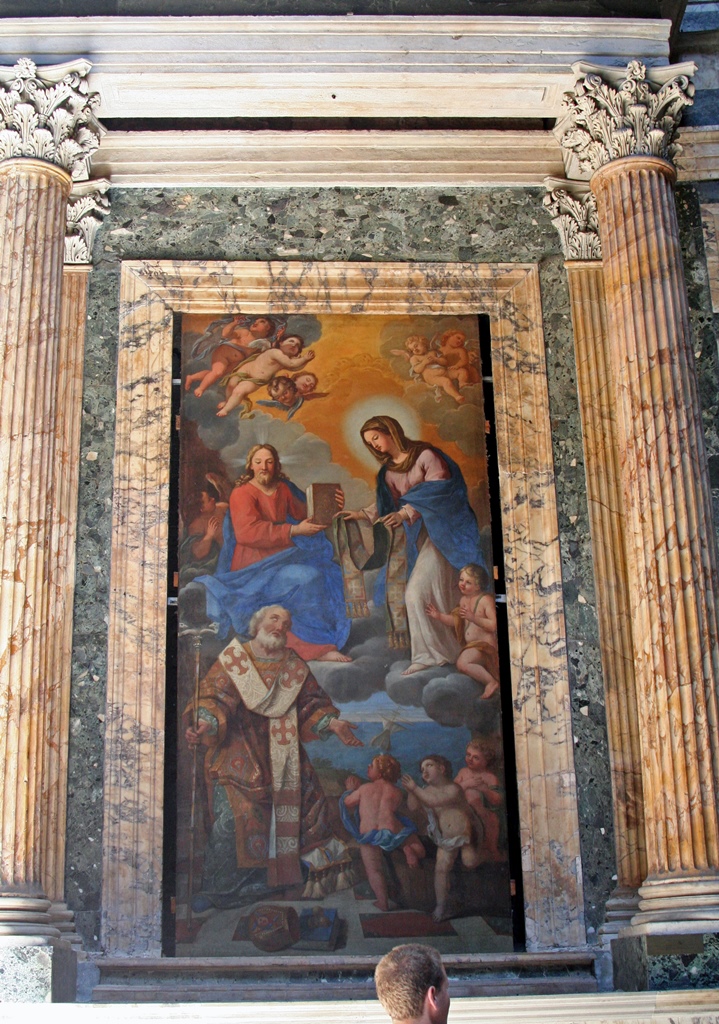
Madonna of the Girdle & St. Nicholas of Bari (1686)
Annunciation, Madonna of the Girdle and Doorway
We also noted the several tombs of those buried in the Pantheon. Among others, these
long-term residents include Victor Emmanuel II (the first king of Italy, subject of
the gigantic monument near the Forum), Umberto I (the second king, who was assassinated
by an anarchist in 1900) and the Renaissance painter Raphael.
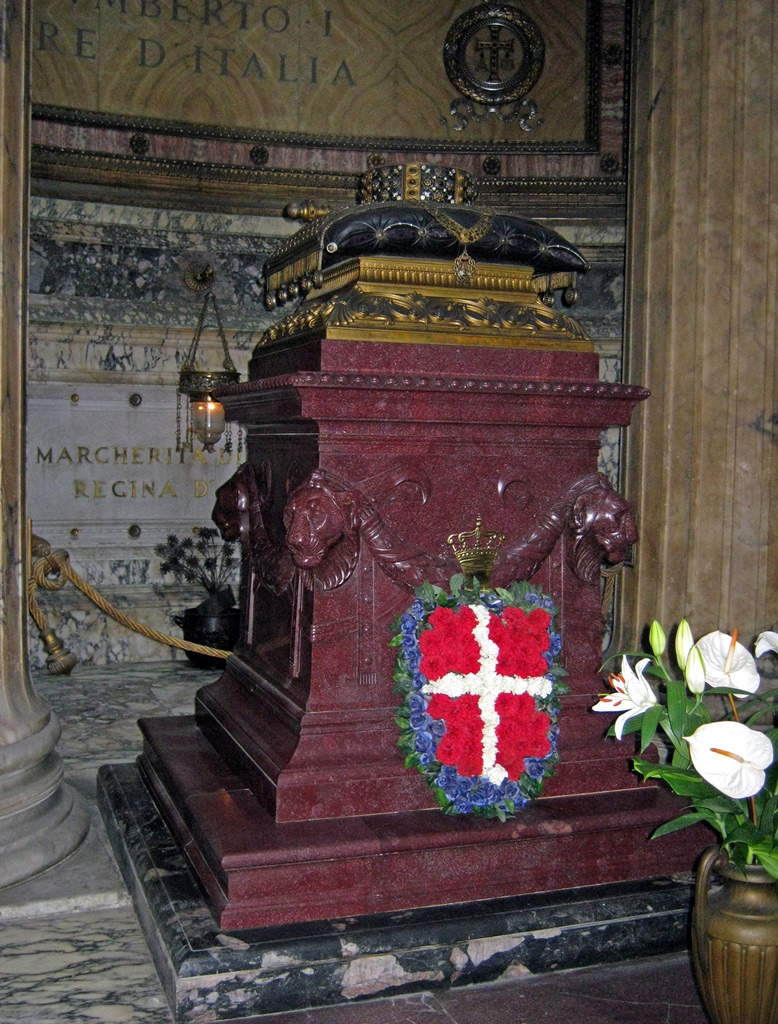
Tomb of Umberto I (1844-1900)
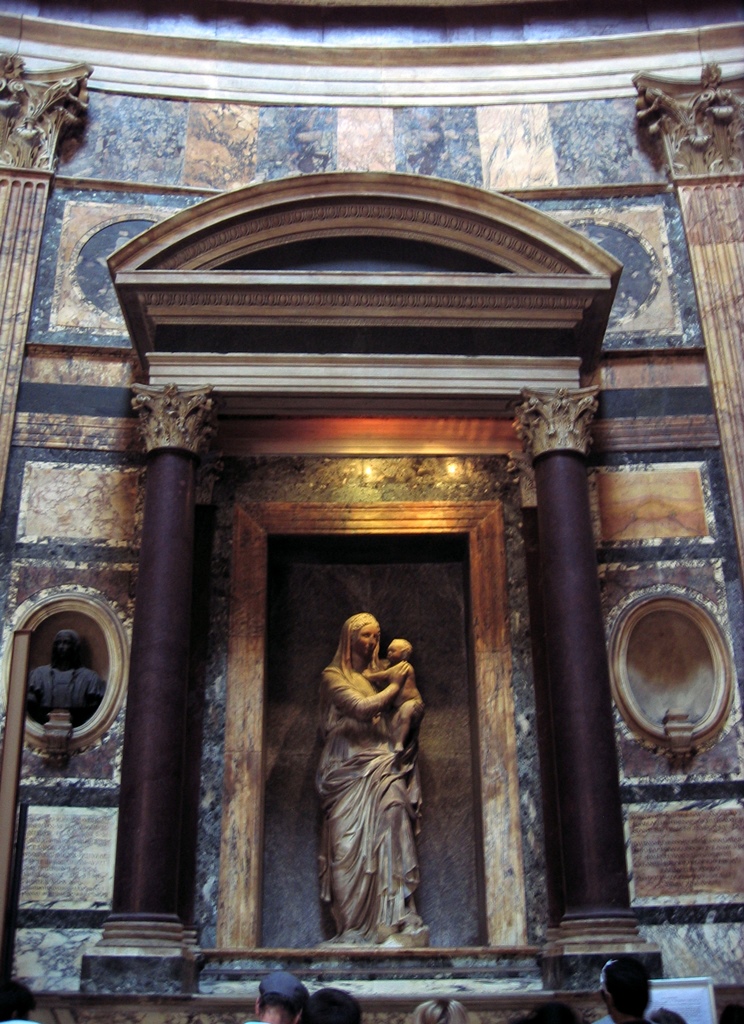
Tomb of Raphael

Tomb of Raphael
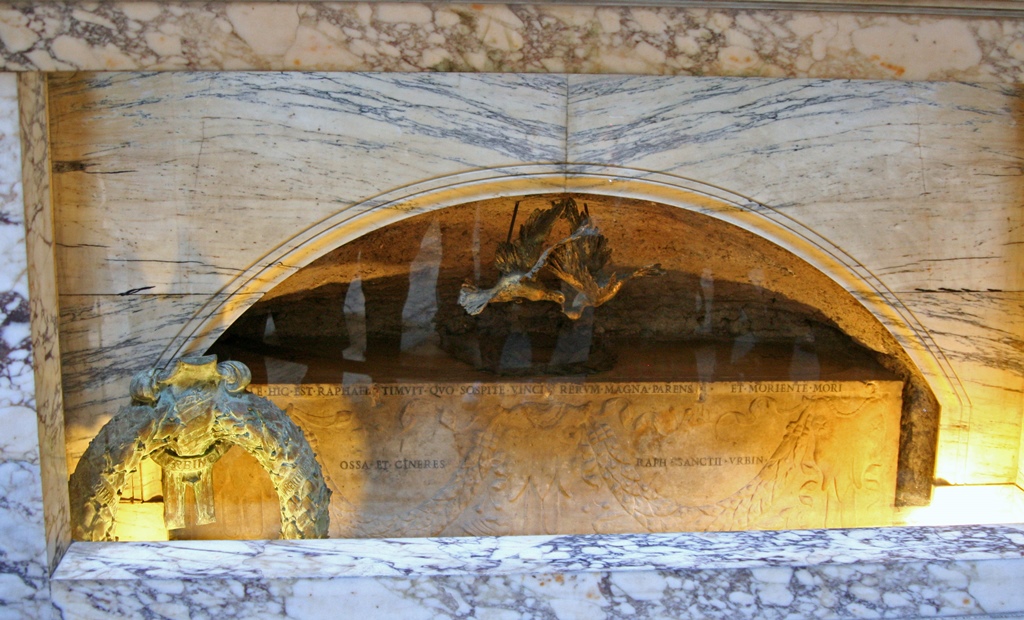
Sarcophagus of Raphael
Tomb of Victor Emmanuel II
After a time, we emerged from the Pantheon and continued east in search of further adventure.

